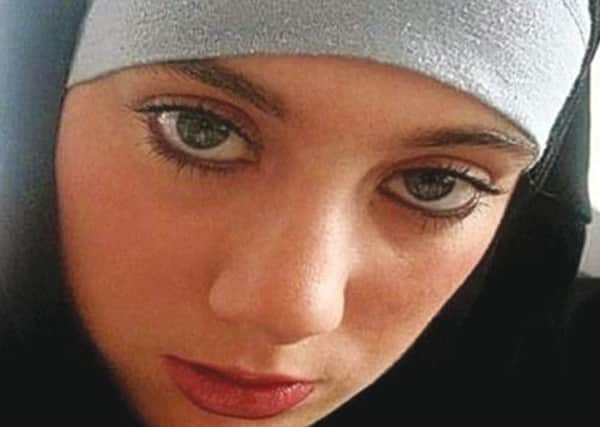Dani Garavelli: Darkness in White Widow mythology


By the time Interpol placed her on its red list at the request of the Kenyan authorities, she had – like Amanda “Foxy Knoxy” Knox – been given a nickname, the White Widow. That’s the thing about women criminals, especially attractive, white ones from respectable homes: so far do they stray from our perceptions of what a woman should be, they instantly become a source of fascination. “What could cause this ordinary girl to take part in this heinous act?” we ask in a way we never would of their male counterparts.
If this was true for Melissa Reid and Michaella McCollum Connolly – two of around 30 Britons languishing in a Peruvian jail on drugs-trafficking charges, but the only ones to have made the national news – how much more so for a woman described variously as a financier, organiser, recruiter and/or frontline activist with Somalia-based extremist group al-Shabaab.
Advertisement
Hide AdAdvertisement
Hide AdIt’s not merely that Lewthwaite is glamorous, though she is. The image of her in full make-up, her long-lashed eyes looking coyly upwards from beneath a white headband, suggest a woman well aware of her sexual powers – it’s the sheer improbability of her journey from daughter of a soldier to Islamic fundamentalist.
There’s also the mystery over her involvement in the attack (she is wanted in connection with an alleged bomb plot her British flatmate is standing trial over), her whereabouts (did she die in the centre or is she on the run with her three children?), and the other little puzzles she has scattered along the way: the false passport, the alleged Twitter message and the letters which suggest her children want to rally to the cause.
That strange journey – which began with her conversion to Islam at 15, sees her play the role of the unsuspecting widow of 7/7 suicide bomber Jermaine Lindsay and ends with her in hiding in Kenya – taps into subliminal fears of the power of Islam to radicalise our daughters. But it also highlights the rise of the female terrorist. Most rebel movements have had female members willing to commit acts of violence for the cause, with kidnapped heiress Patty Hearst who robbed a bank after being kidnapped by the Symbionese Liberation Army; and Tamil Tiger Thenmozhi Rajaratnam, who assassinated Rajiv Gandhi, among the most notorious. However, women are playing an ever bigger part in Islamic terror. The Black Widows – from whom Lewthwaite takes her nickname – have been involved in a long list of terrorist attacks linked to the fight for Chechen independence, while in 2008 there was an increase in the number of women who became suicide bombers in Iraq.
Lewthwaite, however, belongs to a more select band, which includes Hearst and Rose Dugdale, the daughter of an English millionaire turned IRA member, who have no ethnic connection to the cause for which they’re fighting.
There are those who find it difficult to understand why any white girl would give up her freedom for a culture they consider oppressive, yet thousands of girls have. Many will have fallen in love with a Muslim, but Lewthwaite converted long before she “met” Lindsay in an internet chat room. Living in a predominantly ethnic area, she became fascinated by Islam. Perhaps its spiritual certainties and extended families held an attraction for Lewthwaite, who was reeling from her parents’ divorce. At the same time, however conservative it might seem, converting to another religion is an act of rebellion. For a girl who, old friends say, tended to fade into the background, it might have been a way of gaining status.
We don’t know whether Lewthwaite was radicalised at the time of the 7/7 bombing, although, in the wake of her husband’s death she protested her innocence so convincingly police moved her to a safe house. Nor do we know what drove her to become a terrorist, though a study conducted by Lancaster University has suggested that, unlike men, female terrorists are more likely to be driven by personal circumstances and issues – such as revenge – than ideology.
Until she is captured, we can only speculate about her motivations, her relationship with Briton Jermaine Grant – arrested in Kenya in 2011 and now on trial accused of possessing explosive material and conspiring to commit crimes – and the identity of her third child’s father. The information vacuum created by her absence is being filled with gossip. Sightings of a “pale-skinned woman with long, dark hair” just like Lewthwaite’s at the mall have been reported. One shopkeeper says she opened fire on her with an AK47, while others insist she pointed out targets for the men to shoot.
There is, for now, no evidence to link her to the attack, yet Lewthwaite is being mythologised. Unedifying though that may be, particularly as it may be diverting attention away from more powerful perpetrators – she looks to have already earned her place as one of the decade’s most notorious women criminals. «
Twitter: @DaniGaravelli1